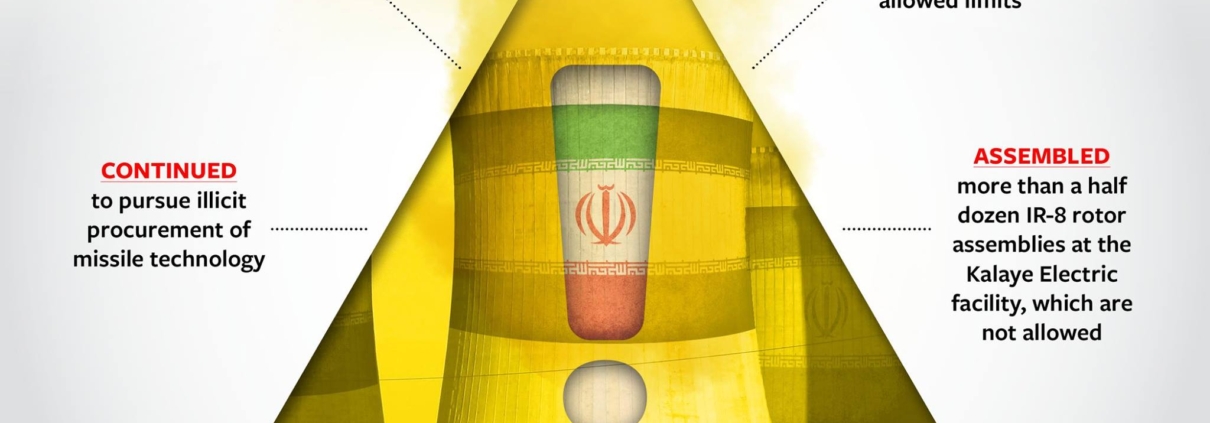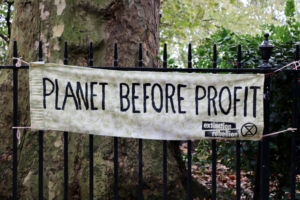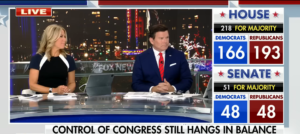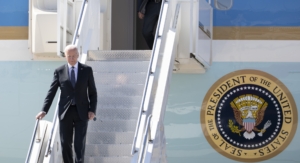Iran Deal Or No Deal, A Not So Charitable Donation, And Is Free Trade Too Hard?
Here’s What You Need To Know
In his remarks to the U.N. General Assembly last month, President Trump harshly criticized the Iran nuclear deal as an “embarrassment” and “one of the worst and most one-sided transactions the United States has ever entered into.” Yet despite his seemingly clear opposition to it, President Trump has twice certified the Iran nuclear deal since taking office, and faces another upcoming certification deadline this week. So, what is the deal?
There are a number of moving parts on this key issue, contrary to the simplistic rhetoric used on the campaign trail during the Republican presidential primary, and President Trump is expected to announce his Administration’s policy toward Iran soon. Therefore, with some help from certified Friend of Delve and Iran deal warrior-scholar Omri Ceren, here are some facts to help you navigate the developments as they unfold in real-time:
- What Is The Joint Comprehensive Plan Of Action (JCPOA)? This is the official name of the agreement that was negotiated between Iran and the Obama Administration, the U.K., France, Russia, China, and Germany in 2015, which is intended to stop Iran from acquiring nuclear weapons. In exchange for placing limits on its nuclear program, Iran received relief from oil and financial sanctions, including roughly $100 billion in previously frozen assets. Crafted explicitly to get around Congressional opposition, the JCPOA was also submitted by the Obama Administration to the U.N. Security Council for approval before Congress had the chance to even review the controversial agreement, which irked legislators from both parties.
- Why Is The President Required To Certify Compliance Every 90 Days? Due to these concerns about the JCPOA and the way it was implemented, Congress passed the Iran Nuclear Agreement Review Act of 2015 (INARA) as a way to reassert themselves in the process. Among other provisions, this law requires the President to certify to Congress that Iran remains in compliance with the JCPOA every 90 days.
- Why Did President Trump Certify The Iran Deal Twice Already? He did so “reluctantly,” giving his Administration more time to determine the way forward on this issue. The Administration is also currently undertaking a six-month comprehensive Iran policy review, which is expected to be completed by an October 31st deadline.
- What Happens If The President Doesn’t Certify Compliance This Time? The JCPOA does not immediately become null and void. Instead, Congress will have 60 days to decide whether to reapply sanctions against Iran. If Congress does reapply sanctions, this move would violate the terms of the JCPOA, although the exact consequences in this scenario are unknown beyond speculation.
- Does Iran Appear To Be In Compliance With The Deal? While proponents of the deal note that the deal “relies on verification,” the International Atomic Energy Agency (IAEA), which oversees this verification, does not have access to certain Iranian military sites. In addition, Iran attempted to buy illegal nuclear technology 32 times since the deal was implemented. However, the Chief of the IAEA says that Iran is upholding its compliance, despite having never fully certified this claim.
- Where Do The Key Players Stand? President Trump has accused Iran of violating the “spirit” of the deal, and is expected to announce that he will not certify compliance – a move supported by U.S. Ambassador to the U.N. Nikki Haley and national security hawks in Congress like Senator Tom Cotton (AR). In addition, European allies who helped negotiate the deal will likely, if begrudgingly, end up going along with the U.S. should it reapply sanctions. However, Secretary of State Tillerson and Defense Secretary Mattis support remaining in the deal while working to improve aspects of it, and Iran has said it could walk away from the deal if the U.S. does not uphold its commitments.
Given the space between what the President and some of his advisors are saying, the way forward may ultimately be more symbolic rather than substantial by putting the onus on Congress to act or not act on the deal’s future.
Subscribe to Receive Insights
"*" indicates required fields
News You Can Use
YOU’VE BEEN FOIA’D
College students in Virginia are about to hear a lot more about the state’s upcoming off-year elections than they expected. While they are likely familiar with organizers coming to campus to register voters, they may be surprised to learn that a left-leaning environmental group is about to invade a lot more of their safe space. Through Freedom of Information Act (FOIA) requests to every state-supported college and university in Virginia, progressive political group NextGen Virginia received the public, personal information of around 40,000 current students at Virginia Tech, Radford University, and 16 other schools.
NextGen Virginia, which is part of billionaire environmentalist Tom Steyer’s political organization, requested publicly available student directory information such as names, phone numbers, emails, and addresses in order to help register and turn out millennial voters in November’s off-year election. While some universities concluded they must provide the information under FOIA, others cited it in their refusal to furnish the same. What remains to be seen is whether this tactic will become commonplace during future political campaigns, or if it will generate enough public opposition and legislative action to render it politically untenable.
IS FREE TRADE TOO HARD?
Has support for free trade eroded because trade and logistics are complex? According to Ryan Peterson, yes. Peterson is the CEO of software startup Flexport, which helps eliminate the complexity of global trade and logistics. In lowering the barriers that prevent more people around the world from fully participating in connected commerce, he suggests that millions more can be pulled out of poverty.
But can making trade easier really make it more popular? A survey by the Pew Research Center showed that people hurt financially by free trade agreements oppose them by a ratio of nearly two to one. If Flexport and other such technology initiatives hope to change these attitudes, they will need to make sure the benefits of their innovations reach the people and regions who have been hurt by trade in the past.
A NOT SO CHARITABLE DONATION
When political donors are caught in scandal, candidates and party committee often donate these tainted contributions to charities to help distance themselves from the controversy. Not surprisingly then, after Democratic megadonor and film producer Harvey Weinstein admitted to sexually harassing women over the past three decades, the Democratic National Committee (DNC) followed this well-worn path. However, their charitable donation was not that charitable, perhaps due to the trouble the committee has had raising money.
The DNC donated just 10% of the $300,000 Weinstein has contributed to it over the years, and gave those funds to left-leaning women’s groups such as EMILY’s List, Emerge America, and Higher Heights that will likely spend the funds in ways that further the political goals of the liberal grassroots. Despite headlines to the contrary, these facts suggest that the DNC is doing little more than window dressing in confronting its association with the Hollywood mogul.
THE FEARLESS GIRL FALLACY
In advance of this year’s International Women’s Day in March, a bronze statue of a defiant girl was placed in front of Wall Street’s iconic Charging Bull statue. The statue, entitled Fearless Girl, was commissioned by State Street Global Advisors as part of their push to encourage more women onto corporate boards and was a viral success.
However, with news that the firm’s parent company just paid $5 million to settle allegations it underpays women and minorities, the Fearless Girl campaign looks less like simply putting gender and diversity issues “front and center,” and more like a proactive measure to mitigate the fallout from a federal investigation into their contracting practices. In the end, this story serves as further proof that messaging alone cannot bridge a credibility gap if the facts do not support doing so.
HOW MUCH TO TRUST?
Author Rachel Botsman co-parented her three year old daughter with Amazon’s Alexa Voice Service for a few days and described how her daughter’s “easy embrace of Alexa,” was “slightly amusing but also alarming.” Her daughter’s embrace of Alexa was not unusual, and is endemic of the broader trend of robots increasingly becoming integrated with everyday life.
As companies create new technologies that become central parts of our daily routines, Botsman writes that people are no longer “trusting machines just to do something, but to decide what to do and when to do it.” This shift raises questions about how these technologies will be used and regulated in the future. Companies, policymakers, and the public will need to think through the implications of this new era, and how to create policies for it.



